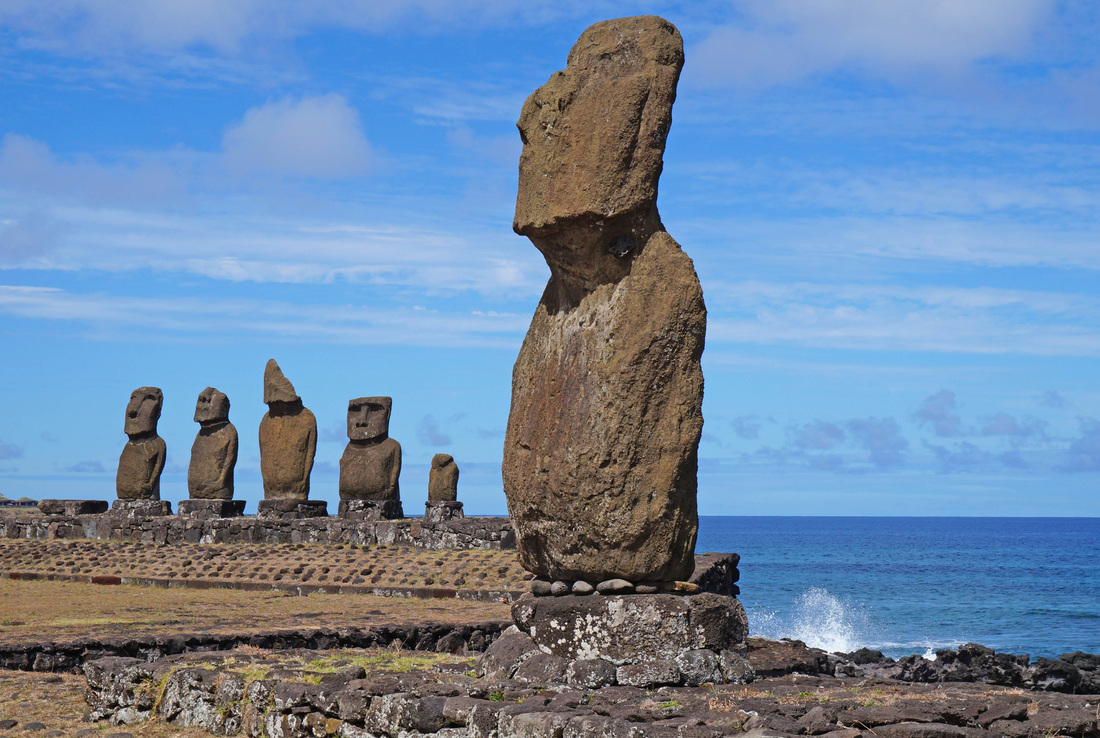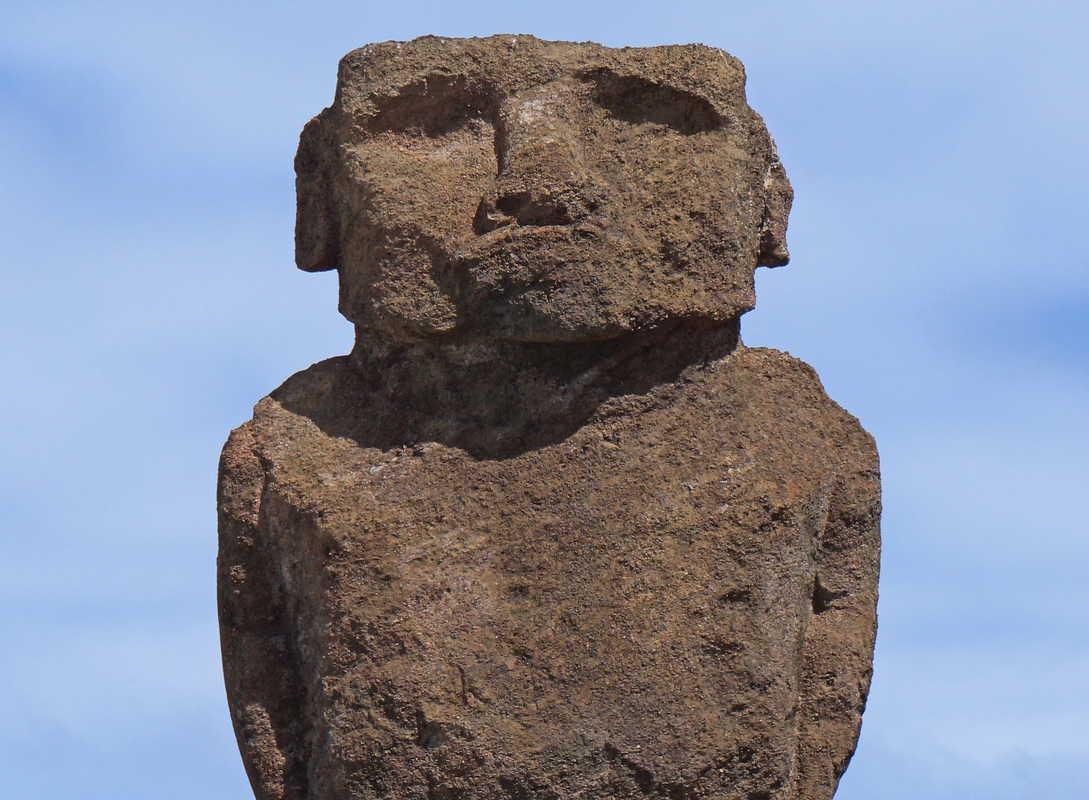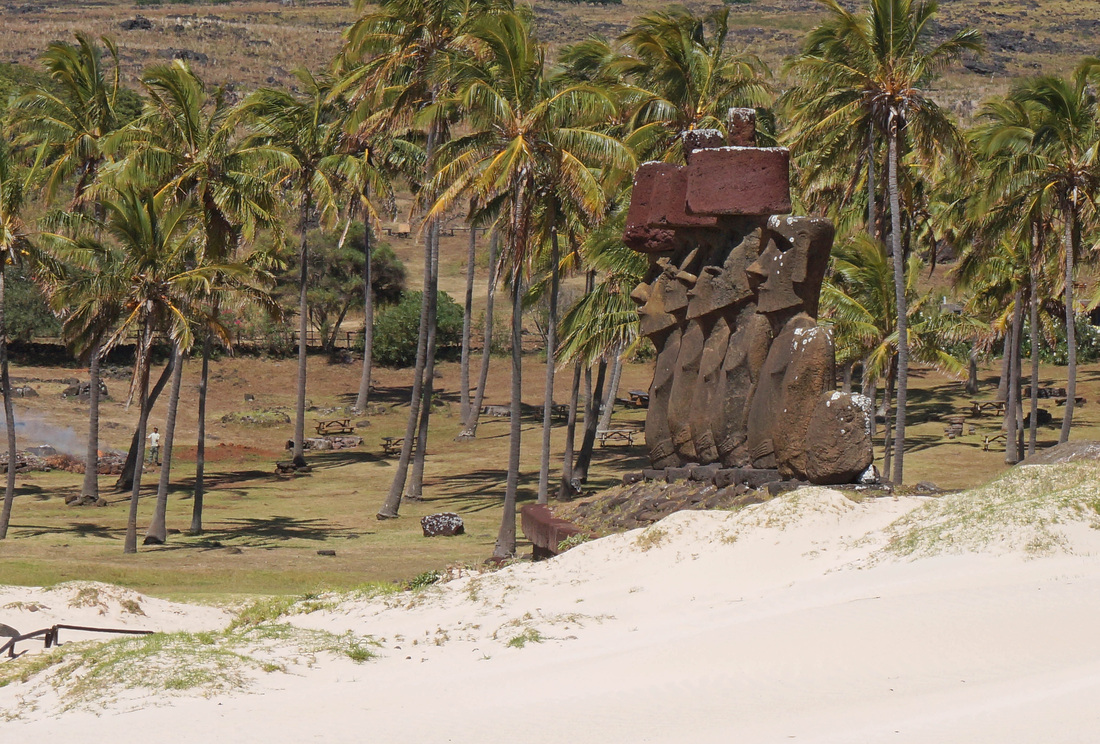Easter Island's isolation is astounding, a tiny speck of land surrounded on all sides by the Pacific Ocean extending for two thousand miles. With a population of less than six thousand, half of whom are the indigenous Rapa Nui, which is also their name for the island, it feels utterly remote. Almost all the population and all the activity is centred on the town of Hanga Roa, which could pass for a small spread-out settlement in other less extreme locations, leaving the rest of island as wild and open landscapes, populated by little but the moai or statues which are dotted singly and in groups over the rocky terrain, almost all with their backs to the boundless ocean.
Spending time in December in this very remote place fulfilled a long-held dream. Maybe fuelled by knowledge of Thor Heyerdahl's visit there in the 1950s- his team of archeologists were the first to do extensive and systematic research, which led to the publication of his popular Aku Aku as well as more academic publications. The current book Easter Island, Earth Island by Paul Bahn and John Flenley spends much of its length contradicting and repudiating Heyerdahl's conclusions which- while probably legitimate- seems an awfully familiar way for academics to go on.
What Bahn and Flenley don't talk about much is why some eight hundred monumental statues were created by this tiny community, probably over a period of five centuries from 1000 AD. How it was done is astonishing, both in terms of carving and transporting them- recent theories are that the volcanic rock is easier to carve than had been thought, and that the island was formerly covered in palms which provided rollers to drag them over long distances. By the early nineteenth century, the palms had all been cut down, and the statues deliberately toppled. The subsequent tragic history, of imported diseases and the enslavement of most of the population and their transportation to Peru, has meant that the oral traditions of this sophisticated culture were almost entirely lost.
But it would seem that the island's extreme isolation meant that it was their world- for centuries, generation after generation had no contact with anywhere else, only knowledge that its first settlers had come as boat people from somewhere further west. So these figures act as guardians, enclosing and protecting their world; maybe revered ancestors, maybe deities: the island was called Te Pitu O Te Henua, which means something like the centre of the world. They were sentinels for the communities that constructed them, but they also provided a boundary, physical, metaphorical and spiritual, with the world beyond.





